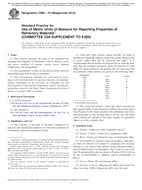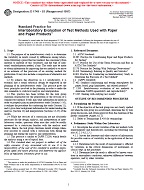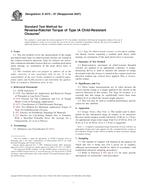1.1 This test method covers the determination of the California Bearing Ratio (CBR) of soil tested in place by the penetration load of the soil. This test method covers the evaluation of the relative quality of subgrade soils, but is applicable to subbase and some base-course materials. This test method is designed to test in-situ materials and corresponds to Test Method D1883.
1.2 The values stated in either SI units or inch-pound units are to be regarded separately as standard. The values stated in each system may not be exact equivalents; therefore, each system shall be used independently of the other. Combining values from the two systems may result in non-conformance with the standard.
1.2.1 In the engineering profession it is customary to use units representing both mass and force interchangeably, unless dynamic calculations are involved. This implicitly combines two separate systems of units, that is, the absolute system and the gravitational system. It is scientifically undesirable to combine the use of two separate sets of inch-pound units within a single standard. This test method has been written using the gravitational system of units when dealing with the inch-pound system. In this system, the pound (lbf) represents a unit of force (weight). However, conversions are given in the SI System. The use of balances or scales recording pounds of mass (lbm), or the recording of density in lbm/ft³ should not be regarded as nonconformance with this test method.
1.3 All observed and calculated values shall conform to the guidelines for significant digits and rounding established in Practice D6026, unless superseded by this standard.
1.3.1 The procedures used to specify how data are collected/recorded or calculated in this standard are regarded as the industry standard. In addition they are representative of the significant digits that generally should be retained. The procedures used do not consider material variation, purpose for obtaining the data, special purpose studies, or any consideration for the user's objectives; and it is common practice to increase or reduce significant digit of reported data to be commensurate with these considerations. It is beyond the scope of this standard to consider significant digits used in analysis methods or engineering design.
1.4 This standard does not purport to address all of the safety problems, if any, associated with its use. It is the responsibility of the user of this standard to establish appropriate safety and health practices and determine the applicability of regulatory limitations prior to use.
Product Details
- Published:
- 12/01/2009
- Number of Pages:
- 7
- File Size:
- 1 file , 220 KB
- Redline File Size:
- 2 files , 410 KB


